- Home
- Rabbit Trapping
- Rabbit Snare
Rabbit Snare
This post may contain affiliate links so I earn a commission.
Setting a rabbit snare is a quick, easy and inexpensive way to trap a rabbit.
They're popular because they don't require the use of heavy steal traps and you can set one up in just a few minutes.
Whether you're experiencing rabbit damage around your home or you're in a survival situation and need food, most people don't have access to a foothold or conibear trap.
However, many people do have wire, string, shoe laces and other similar devices that can be used to build a snare.
There's always a debate over the best way to construct a snare and the materials you should use.
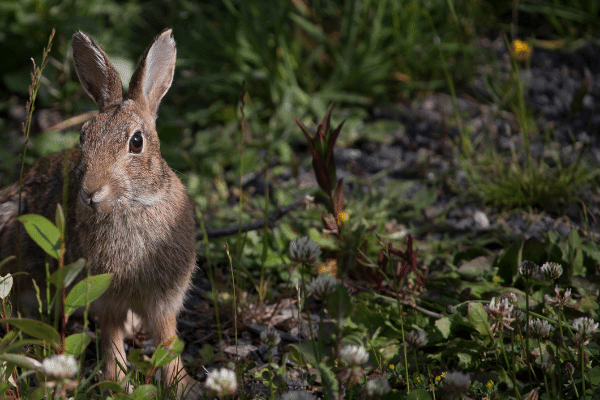
I've found the best way is just to keep things as simple as possible.
Before you begin it's important to check your local laws to see if snares are legal in your area.
Each state or country usually has specific guidelines regarding dates, the gauge of wire you can use and whether or not a license is required.
Rabbit Snare Construction
Although you can use string, shoe laces and even rope to construct the snare, the preferred rabbit snare material is between 20 gauge and 24 gauge copper, brass, galvanized or stainless steel wire.
To begin, cut the wire to a length of about 21 inches.
You can measure the first few pieces but after a while you can pretty much just estimate the correct size and measuring isn't necessary.
Use a pair of wire cutters or needle nose pliers to cut the wire.
You may have to use a slightly longer piece of wire depending on the set location.
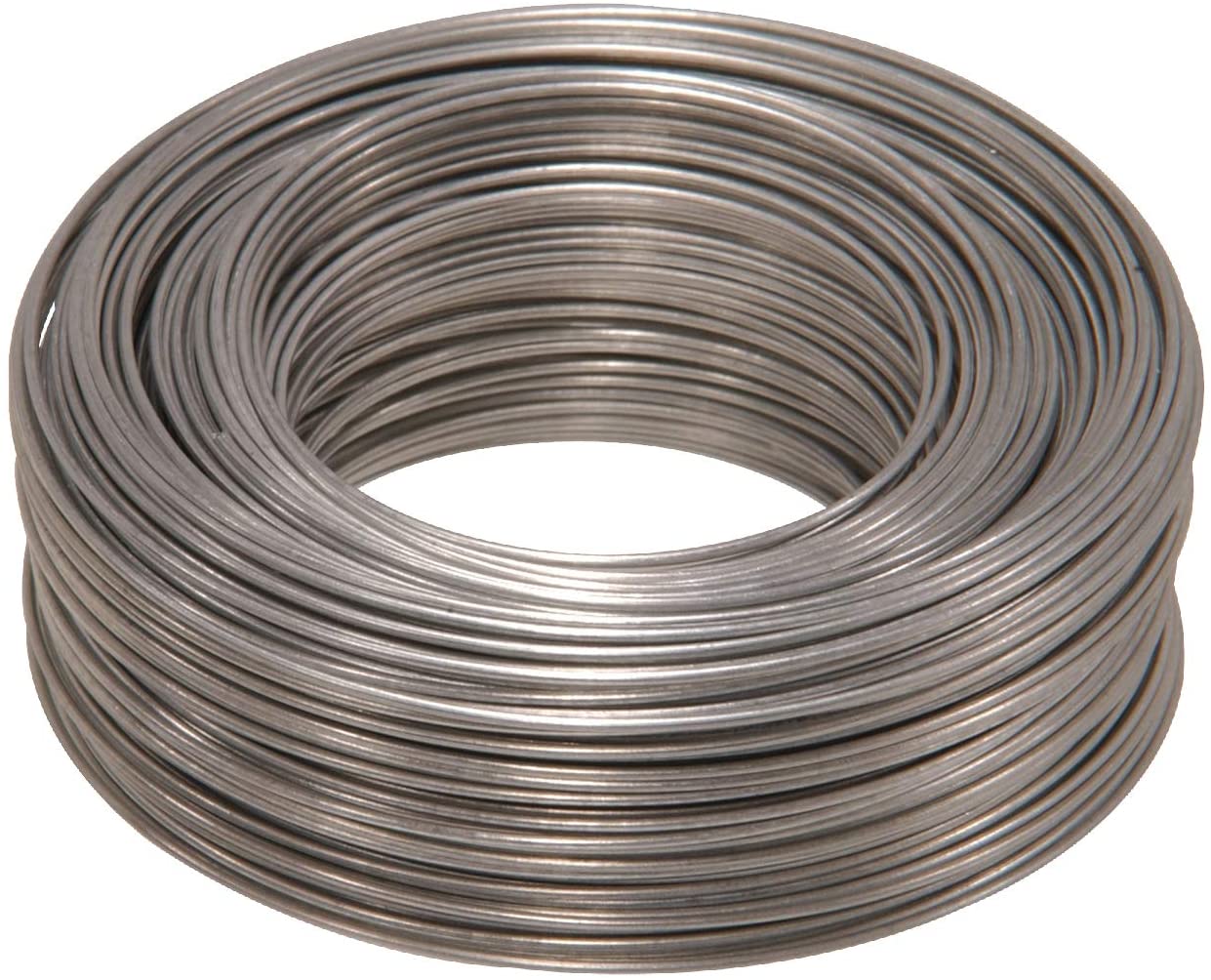
If you're in the woods and don't have access to pliers you can just bend the wire back and fourth several times until the wire breaks in half.
Once the wire is cut, take one end and make a small loop and wrap the excess wire around itself.
It's important to wrap the wire about 3 or 4 times to insure the loop won't fail when the rabbit pulls against it.
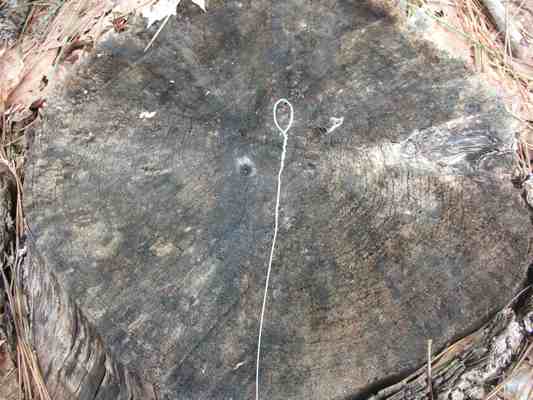
Now, take the other end of the wire and thread it though the loop you just made.
This will create the larger loop that catches the rabbit.
There's a lot of debate over the best size of the loop.
As a general rule you should make the loop a little larger than your fist.
A loop that's too big will cause you to catch the rabbit by the body or rear quarters.
The correct loop size will catch the rabbit around the neck which quickly and humanely kill the animal by strangulation.
To keep the shape of the loop slightly bend the wire to a vertical position as shown below.
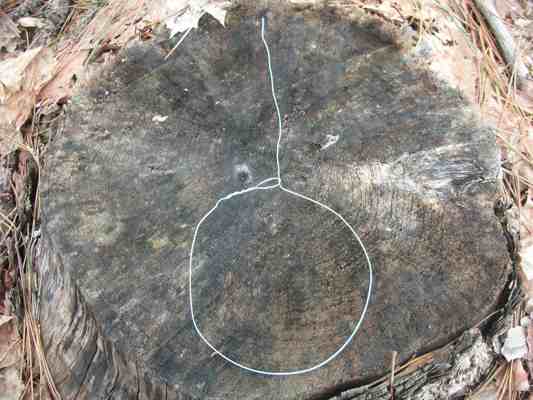
The best location to set a rabbit snare is on a highly traveled path or "runway" that has a natural funnel made by sticks, rocks or vegetation.
Rabbits are creatures of habit and will typically follow the same pathway over and over.
A light dusting of snow on the ground makes finding a runaway a lot easier.
This picture shows a nice runway leading though some briars and pine saplings.
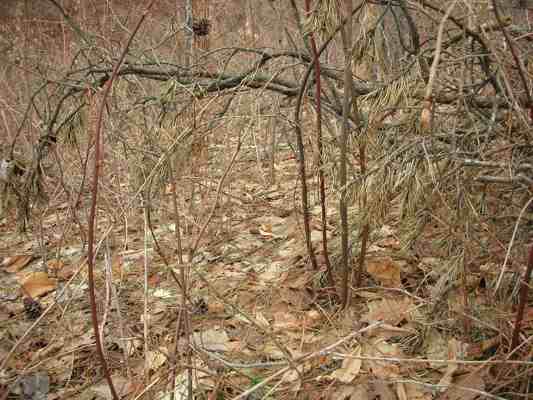
Once you've found the best location for the snare it's time to construct the set.
Take a branch and stick it in the ground on an angle.
You can use a nearby tree or a small sapling that's growing naturally nearby if the location has one already available.
Wrap the wire around the branch keeping the bottom edge of your loop approximately 5 to 6 inches off the ground.
Again, make sure the wire is securely fastened to a sturdy branch so the rabbit can not escape.
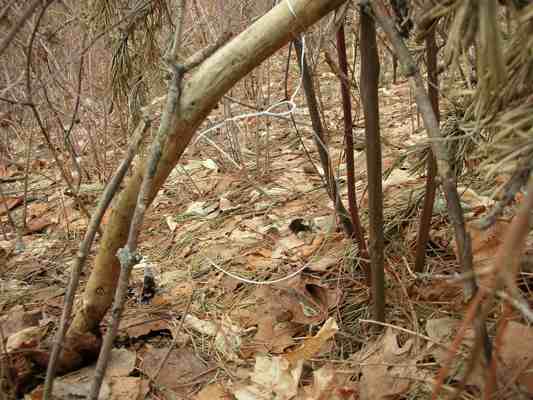
Once the loop is in place you can add some small sticks to the outside edge of the snare to help funnel the rabbit into the loop if necessary.
Here's another picture taken from a distance.
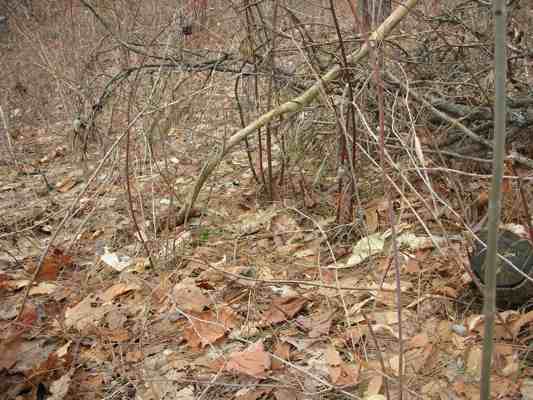
That's it……you're done!
Check the snare early in the morning and at least once every 24 hours to see if you're successful.
Since snares are cheep and easy to set, many people decide to set several snares in the same area to increase the odds of catching a rabbit.



